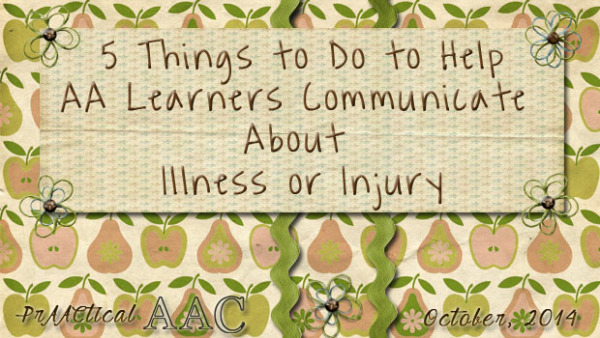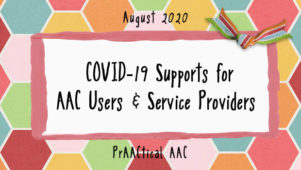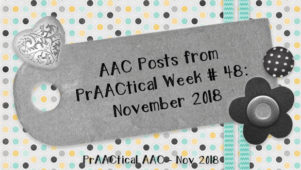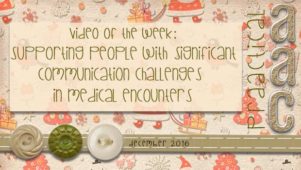5+ Things to Do to Help AAC Learners Communicate About Illness or Injury

- “I don’t want to go now. I’m tired.”
- “Can you be quiet? I don’t feel well.”
- “My ear is throbbing.”
- “I have a such a headache.”
- “Don’t take me in the car. My stomach’s upset.”
Imagine not being able to manage these symptoms or even say these things to get someone to help you.
Good SLPs get input from families during the goal-setting process. Often, families indicate that they want their son/daughter to be able to let them know when they are sick or in pain. This makes sense, of course, but it isn’t an easy skill set to build.
Here are some things that have worked for us.
Make sure the right vocabulary is there: Body parts, feelings, words related to injury or illness, modifiers to tell how much, locatives to tell where. How can we expect AAC learners to communicate when they are unwell if we don’t provide them with the right words? We are big fans of AAC systems that have easily accessible core words, but in this case we often take a different approach and create a separate screen, pop-up, activity row, or no-tech communication aid with the key words and phrases that are needed. When someone is unwell, we want the vocabulary to be as easy as possible to find.
Narrate and model: Once the vocabulary is present in the AAC system, then we use it to do parallel talk. “Jason, you look tired.” “I know you fell. Your knee must really hurt.” “Oh no! I cut my finger. It hurts.” We can teach families to do this and use a think-aloud approach so that their child gets the receptive experience of talking about illness and pain ‘the AAC way.’
Provide solution strategies: Telling us where they hurt is a good first step, but many learners are ready to go beyond that and develop self-advocacy skills. I love Robin’s idea of packing a special ‘sick or hurt’ box with things like bandaids, cold packs, stress balls, sleep masks, and other that can be helpful.image in sick box oct.
Develop learning activities around this topic. Apps and games that have body parts are great for familiarizing kids with the verbiage around being hurt of sick. Check out Robin’s post on this topic.
Manage expectations: We can’t expect learners to be able to do this when they actually get sick or hurt until we’ve taught the skills when they’re well. The teaching and practice has to occur when the person is in a good state for learning: alert, calm, engaged. If we try to get them to use it when they’re actually sick and we haven’t preceded that with enough instruction, it probably won’t be very successful. Teach and practice under low-stress conditions before expecting use under high-stress conditions.
Create a social narrative: These are great tools for helping people with AAC needs gain a fuller understanding of what is happening, and what they can do to cope with the situation. Want more information or some actual social narratives? Here are some resources that might be helpful.
Helping kids be able to communicate when they are unwell is an important skill set, and one that is highly valued by families and caregivers. Do you have effective strategies for supporting people who are learning these skills? We’d love to hear about them.
Filed under: PrAACtical Thinking
Tagged With: Health, illness, Injury, Medical
This post was written by Carole Zangari





2 Comments
We play with stuffed animals, dolls, and Potato Head for younger children. We make them fall and “bleed” (with markers). We say “hurt + body part” and stick on a bandaid on the body part. For older children, we use photos, videos and books about people getting sick, vomiting, going to sleep, and hurting and comment on them by describing what is happening or what the person could say.
Love these ideas, Jennifer! Play is such a great tool for learning. Thanks for taking the time to share.